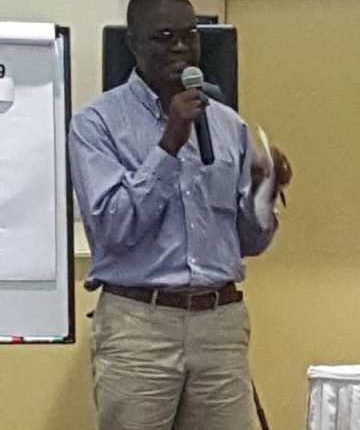Food insecurity among HIV-affected households threatens disease management
A study conducted by the Ghana AIDS Commission (GAC) in four regions in Ghana, has revealed a 50 per cent vulnerability of HIV-affected households to food insecurity due to their low income statuses.
The study found out that the average income of these households were as low as GH₵300.00 a month for a family of between three to four persons, and due to the lack of affordability, some Persons Living with HIV (PLHIV) are forced to reduce their number of meals per day or even skip taking any food at all.
This is due to the increased hunger and appetite as well as increased gastrointestinal side effects after the start of Anti-Retroviral Therapies (ARTs).
Mr Kyeremeh Atuahene, the Acting Director General of the Ghana AIDS Commission, who revealed these in Accra, in his introductory remarks at the National dissemination of an assessment report on Food Security and Vulnerability of HIV-Affected Households in selected regions of Ghana, said this was unacceptable.
He noted that the low income levels among HIV-affected households had been found to be a major contributory factor to poor nutrition among PLHIV and a significant risk factor for the non-adherence to ARTs.
He said these findings should be of top national concern considering the fact that HIV attacked the immune system, which could otherwise be boosted with simple healthy diets.
Mr Atuahene stated that as the need for optimal nutrition in effective HIV treatment success was undisputed to prevent malnutrition in PLHIV, addressing the dehumanizing food consumption coping strategies documented in the study would contribute immensely to the realization of the third of the global 90-90-90 targets.
Good nutrition, he said, was very important in the management of HIV and AIDS, to ensure the maintenance of healthy weight, and help in building a strong immune system while PLHIV continue to take their ARTs to suppress their viral loads.
Mr Atuahene mentioned that key among the study recommendations was the suggestion that the risks posed by these negative coping strategies may be reduced through appropriate safety nets such as the Livelihood Empowerment Against Poverty (LEAP) and also prioritizing female-headed households.
He said to ensure this the GAC in partnership with the Ministry of Gender, Children and Social Protection, have already began a process to identify these vulnerable HIV-affected households to be prioritized under the LEAP.
He also said the study further recommended that to ensure the sustainability of existing interventions to mitigate the negative effects of PLHIV and HIV-affected households, the GAC and the World Food Programme (WFP) together with their partners, must undertake periodic food security and vulnerability profiling of PLHIV households.
This would help inform both policy and pragmatic decisions aimed at improving food and nutrition as well as health outcomes of persons infected and affected by HIV, he said.
Dr Amos Laar, a Senior Lecturer at the School of Public Health of the University of Ghana, and Consultant for the study, said the research which spanned from July to November 2018, engaged 1,666 HIV-affected households across four regions of Ghana, which involved the then Northern, Brong Ahafo, Central and Eastern Regions.
He also explained that the year 2018 marked the transitional period between the end of the WFP’s Country Programme and its new five-year Country Strategic Plan (CSP) spanning 2019 to 2023 hence the data from the study informed the development of the document.
The objective of the study, he said, was to assess the food insecurity and vulnerability status of HIV-affected households in the selected regions to enable the WFP and other stakeholders glean relevant information on food security profile of PLHIVs in Ghana and better tailor further strategies and interventions to address the problem.
Giving further details of the findings, Dr Laar said the data captured suggested that food insecurity was a problem for thousands of HIV-affected households in the four focused regions with about 21 per cent of the 1,666 households confronted with the challenge.
He said the Northern Region rated highest with 24.0 per cent, with the lowest being the then Brong Ahafo with 16.4 per cent, and also 30 per cent of the 1,666 were classified as being at the edge of food insecurity.
Dr Laar said access to arable land was also found to be significantly associated with the vulnerabiity to food insecurity among HIV-affected households, and called for urgent actions towards the effective implementation of the study recommendations.
GNA


Comments are closed.